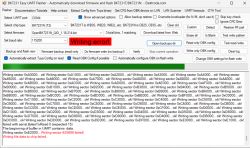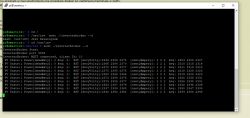Hello
I have a Raspberry 3B+ with an SSD on which is domoticz.
To the GPIO of the Raspberry connected the input of the Integra which informs the Integra about sunset and sunrise. That is, after sunset activates the GPIO which violates the input on the Integra.
The problem is that e.g. after a power loss and after the Raspberry comes back to life in domoticz, the corresponding switch is active - on, so it looks like it's ok. Domoticz remembers the state, but GPIO on the Raspberry board is not active, so it doesn't interfere with the input in the Integra.
How to solve this ? Dismiss GPIO and connect some other device e.g. sonoff which will remember the state after restart ??
I thought that the GPIO control would be the most stable in operation because without intermediate devices.
I have a Raspberry 3B+ with an SSD on which is domoticz.
To the GPIO of the Raspberry connected the input of the Integra which informs the Integra about sunset and sunrise. That is, after sunset activates the GPIO which violates the input on the Integra.
The problem is that e.g. after a power loss and after the Raspberry comes back to life in domoticz, the corresponding switch is active - on, so it looks like it's ok. Domoticz remembers the state, but GPIO on the Raspberry board is not active, so it doesn't interfere with the input in the Integra.
How to solve this ? Dismiss GPIO and connect some other device e.g. sonoff which will remember the state after restart ??
I thought that the GPIO control would be the most stable in operation because without intermediate devices.








